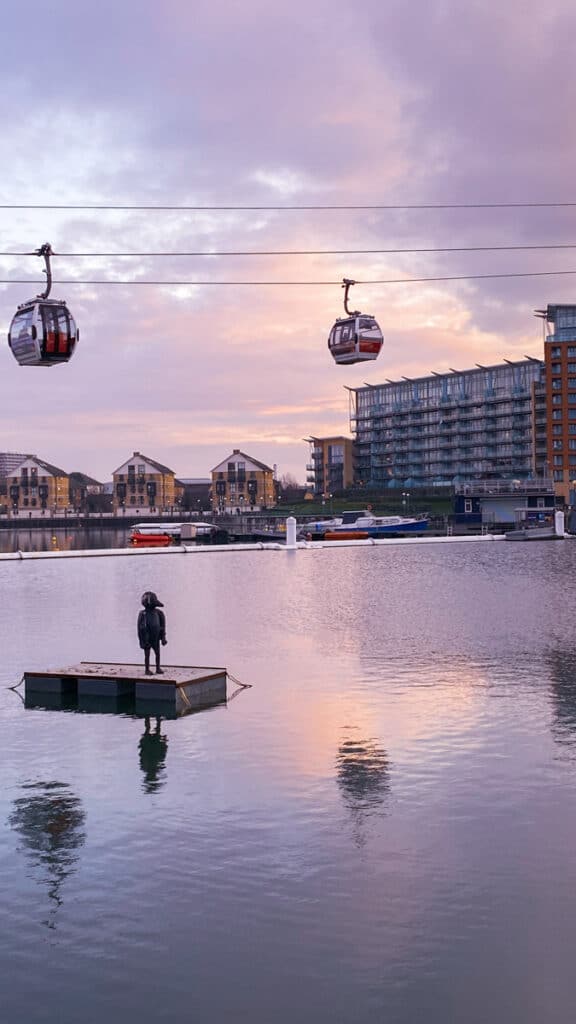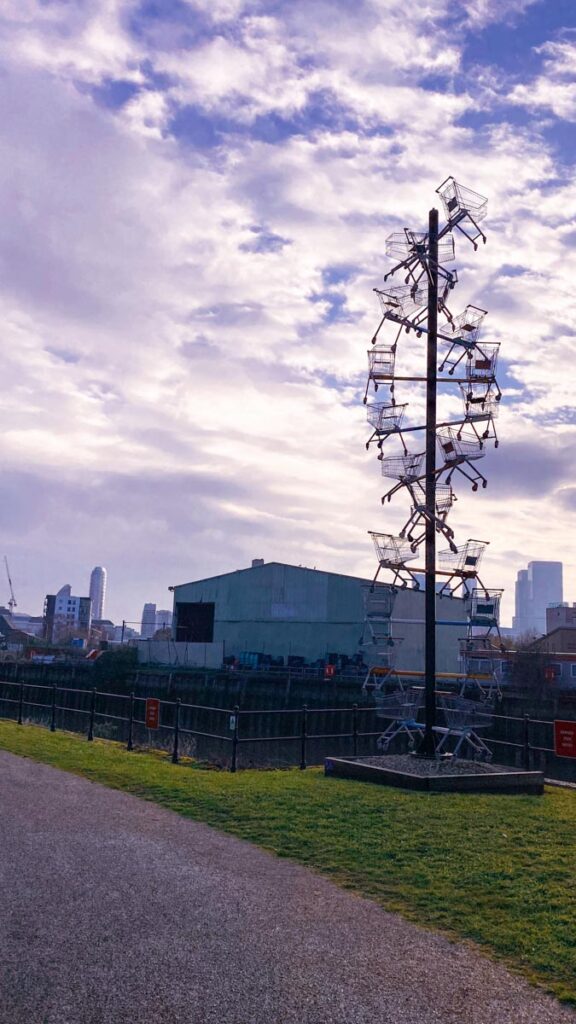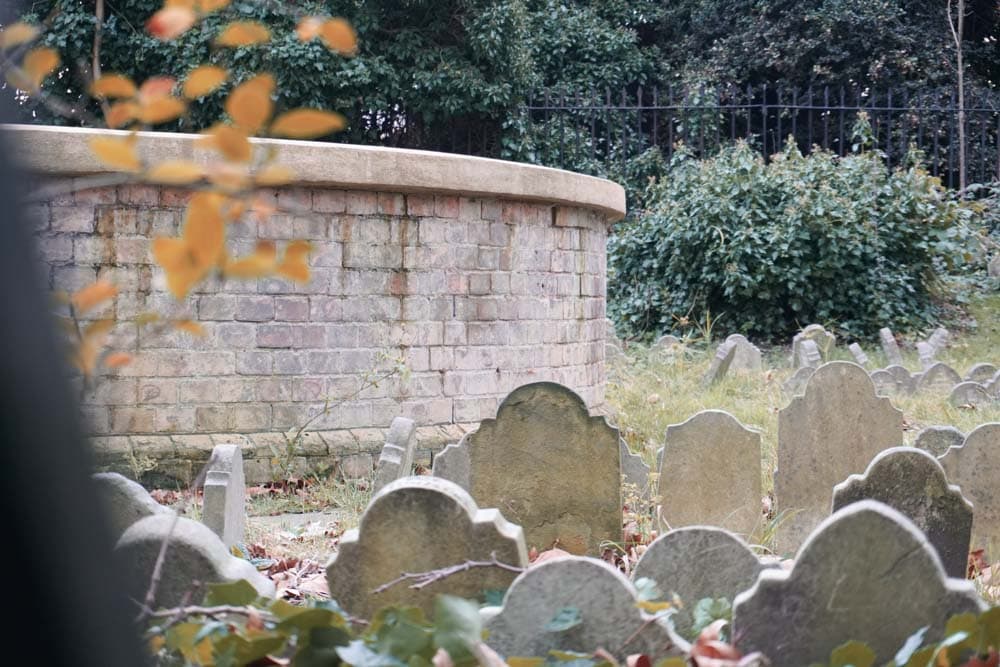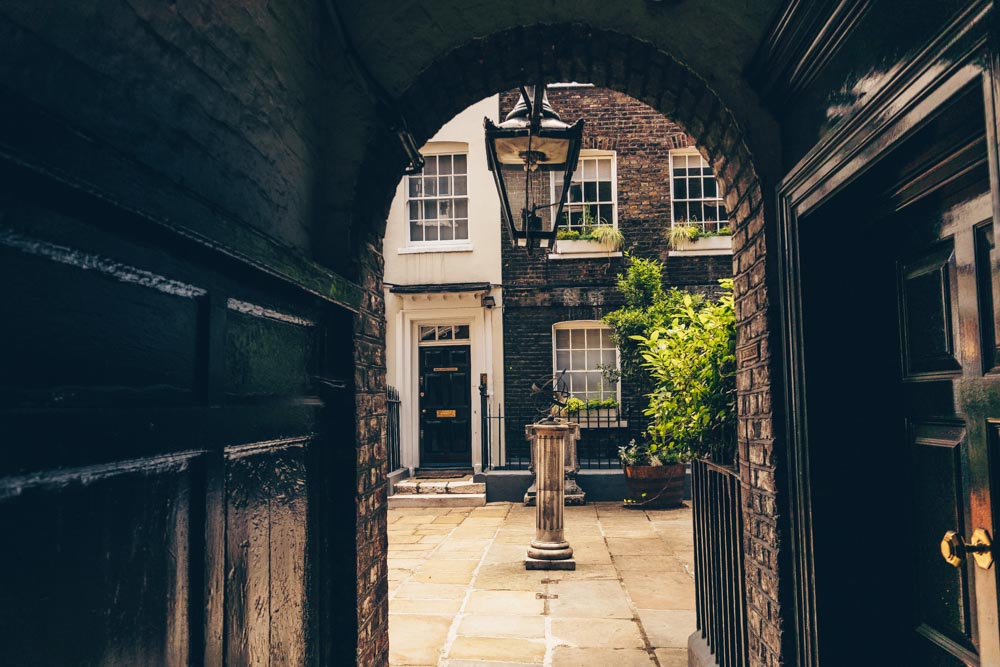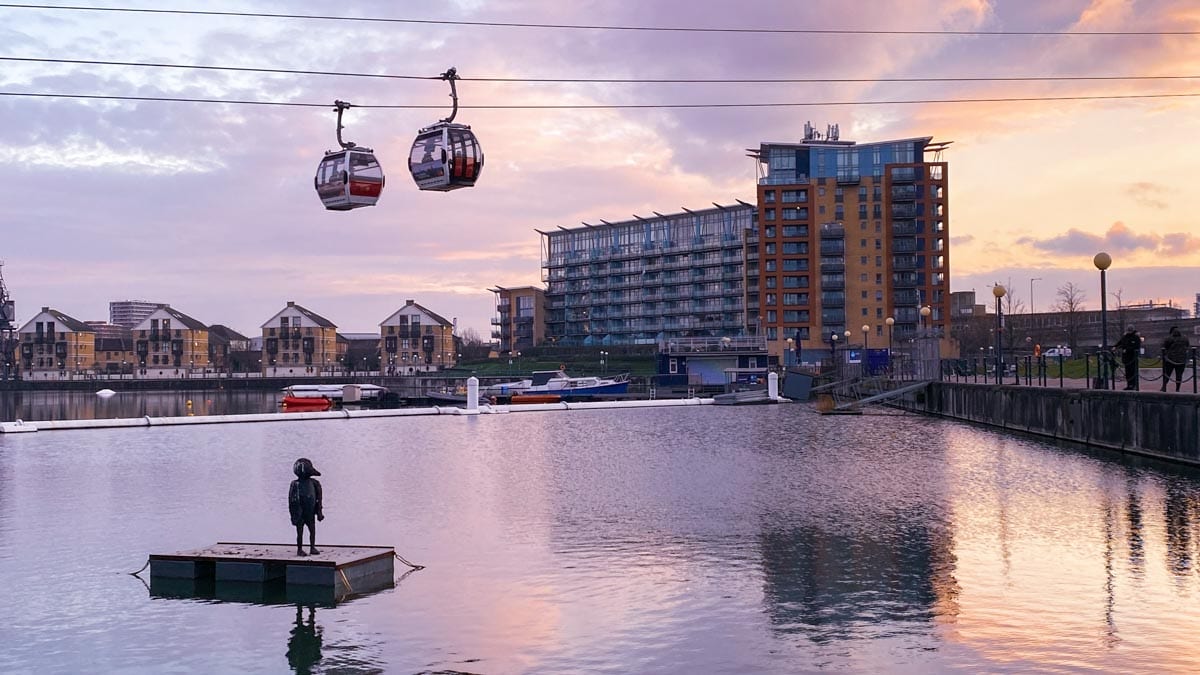
The Line – London’s first public art trail – meanders a route between Stratford and Greenwich. Sporting 12 striking sculptures along its route, the art walk is a brilliant way to enjoy an ever-changing roster of pieces from well-known names and up-and-coming talent. Here’s what you need to know.
London has never had the same public art heritage as other cities like Barcelona, Mexico City and Denver – maybe it’s the weather, maybe it’s the strong heritage of world-class indoor galleries or the thriving street art scene. Whatever it is, The Line, the city’s first public art trail, set out to change it.
Set roughly along the lines of the meridian line in Greenwich, it features eleven works some of which – like Anish Kapoor’s ArcellorMittal Orbit (2012) – you’ll no doubt have heard of, others perhaps less so.
Founders Megan Piper and the late Clive Dutton, created a crowdfunding campaign to fund the initial works in 2014, opening to the public just 18 months later in May 2015.

Bird Boy (without a tail) – Laura Ford (2011) 
DNA DL90 – Abigail Fallis (2003)
Though I’d seen various pieces at one point or another, it wasn’t until yesterday, in the midst of a chilly December’s day, that I set off to do the whole sculpture trail. It’s not often you have an adventure in London – so often we’re hurrying to get from one place to another that we don’t take the time to appreciate the spaces between. Yet an adventure is exactly what it felt like.
The trail took me through a part of London I don’t know very well, dipping into quiet parts of the city with artwork peeping out from unusual places – here a canal-side towpath, there a small patch of green behind an industrial estate – it’s one of the city’s more unusual attractions.
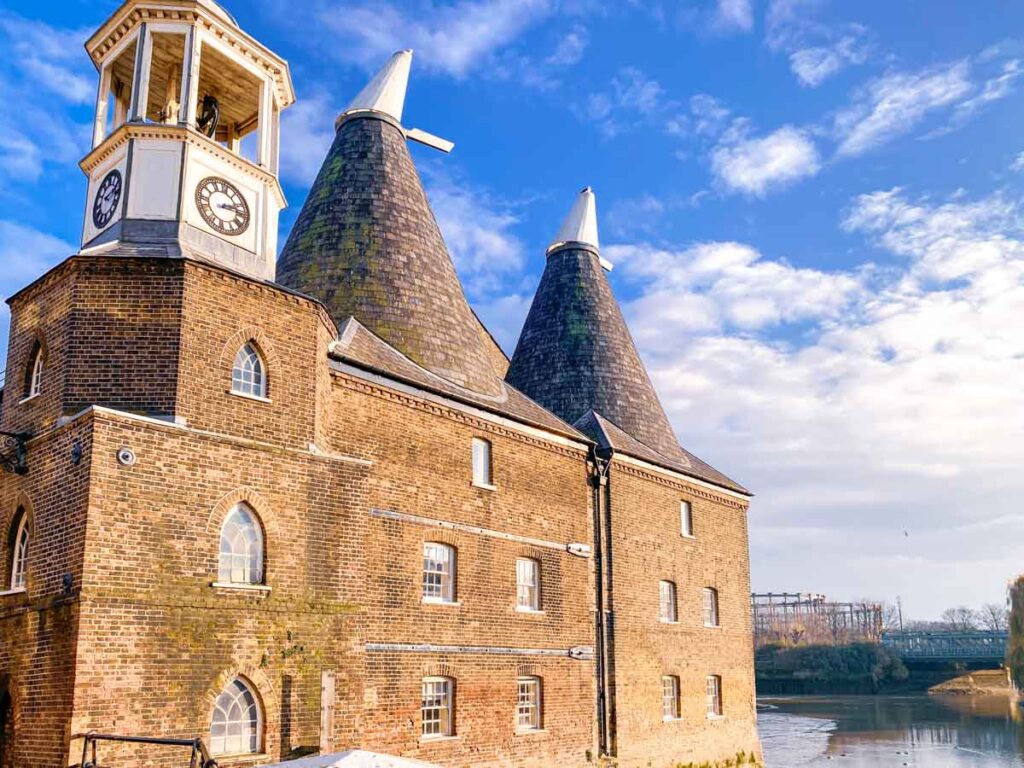
So, what should you expect? The Line starts with the ArcelorMittal Orbit, meandering along a path that takes in Bromley-by-Bow, Canning Town and Royal Victoria Docks before it alights in North Greenwich for the final cluster of artworks.
Monumental sculptures loaned by artists, galleries and private collections bolstered pre-existing works like Antony Gormley’s Quantum Cloud and Richard Wilson’s A Slice of Reality. It’s a work in process, with more works being commissioned and added to the trail each year.
I followed the trail from north to south, starting in Stratford and finishing in Greenwich – of course, you’re welcome to do it in the other direction, just keep a close eye on where you’re going between stops as it can get a bit confusing.
The Line Art Walk London: Step by Step
1 and 2: ArcelorMittal Orbit – Anish Kapoor and The Slide – Carsten Holler (2012)
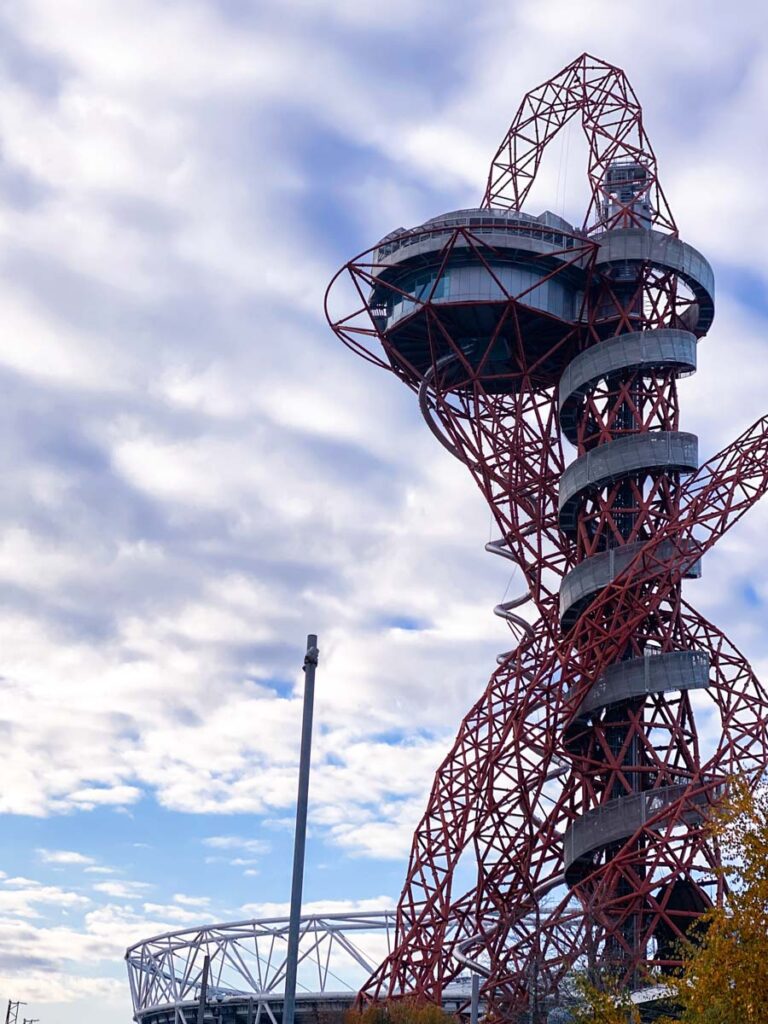
The trail kicks off with not one but two works in one go – though you may never have recognised them as such. The first is the tangled confusion that is Anish Kapoor’s ArcelorMittal Orbit and, entwined around it, Carsten Holler’s The Slide.
The controversy around the works, which were loved and hated in equal measure when they were revealed to the public, might have just about died down, but they’re just as striking as ever.
First came Kapoor’s bold red structure, the UK’s tallest sculpture and loosely based on the Tower of Babel. Curving around it, Holler’s slide, itself demanding its own superlatives: the tallest and longest tunnel slide in the world among them.
Love them or hate them, there’s no denying that the two pieces changed the face of the Stratford skyline, providing a springboard for heated discussion – not to mention the heady thrills of zooming down the slide at full pelt – along the way.
Walking time: around 20 minutes
3: Reaching Out – Thomas J Price (2020)
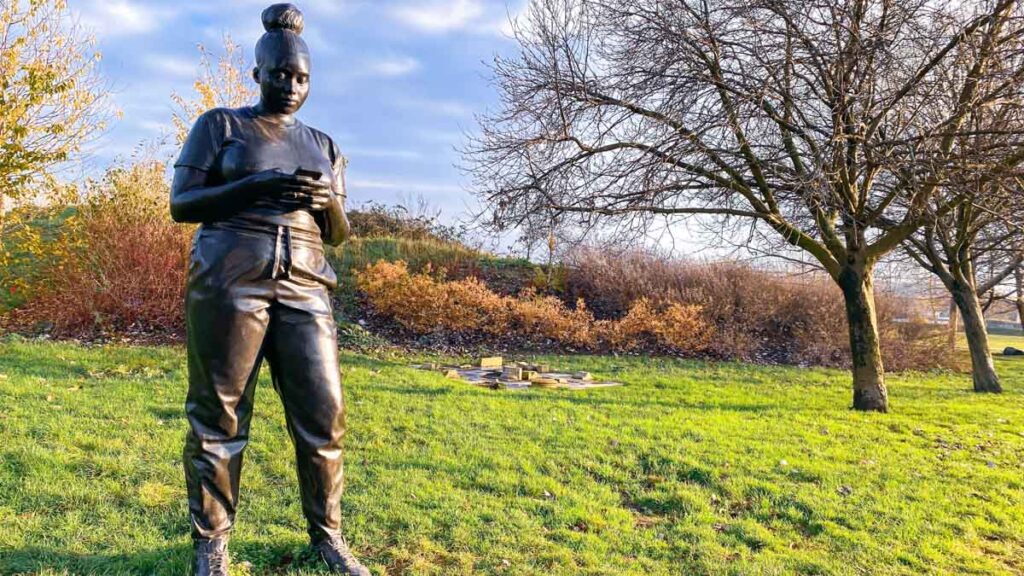
After a relatively short (and admittedly, a little confusing) stretch where I’m 99.99% sure we wandered from the main path we found The Line art walk’s newest piece, Thomas J Price’s Reaching Out, which was erected earlier this year.
Rather shockingly, the work is one of the few sculptures depicting a black woman in the UK – a fact you’d think more fitting for 1950 than 2020 but there it is.
A young woman holds a mobile phone, looking intently at the screen with an ambiguous look on her face, inviting viewers to imagine her internal world.
Price describes the piece as challenging the idea of whom in society we should be looking up to questioning this lack of representation.
In focusing on a young black woman, rarely the subject of traditional sculpture and making her larger than life, comfortable in her own skin and not trying to fit into society’s mould, Price creates a quietly radical message: that people should have the ability to recognise and represent their own value, even when society doesn’t.
Walking time: around 20 minutes. Following the gently meandering path of the River Lea, this is one of the prettiest stretches of the walk, no-one will blame you if you dawdle and take a lot longer.
4: DNA DL90 – Abigail Fallis (2003)
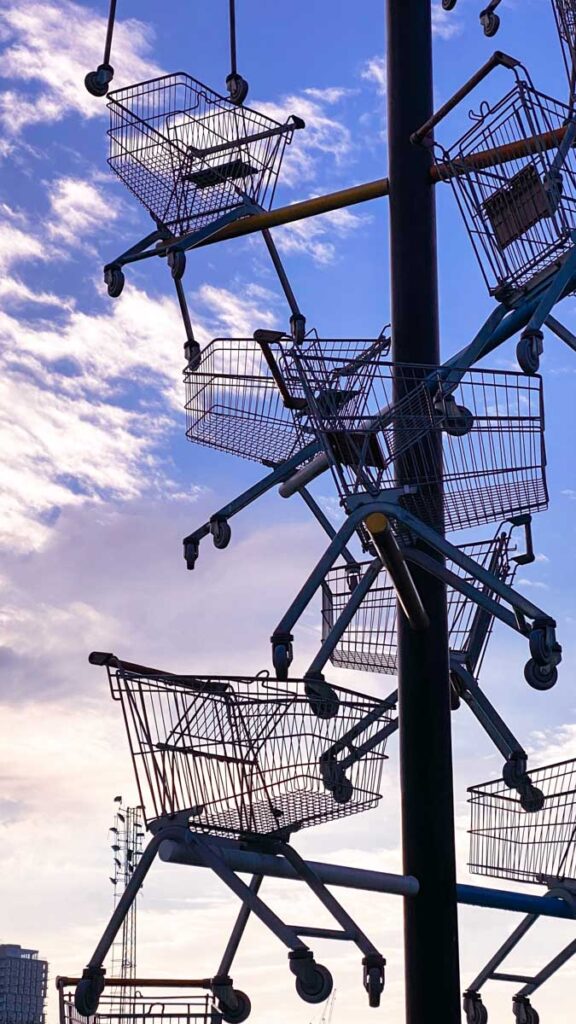
Partly-named after the shopping trolley out of which the sculpture is constructed, Abigail Fallis’ intriguing work sits alongside the River Lee, challenging viewers with its conflation of two seemingly distinct concepts – shopping and genetics.
Taking the shape of a single part of a double helix to celebrate the 50th anniversary of the discovery of DNA sequence, Fallis was commissioned by a supermarket to create a work and came up with the idea of taking the trolley, an everyday object we’re all familiar with and matching it with the helix – something decidedly less visible in popular culture.
Interestingly, Fallis has commented that the merging of the two visuals is meant to represent the entwined nature of consumerism in our DNA. Can’t say I personally think that’s a positive thing and judging from further comments she made, I don’t think Fallis does either.
Walking time: around 10 minutes
5: The Hatchling – Joanna Rajkowska (2019)
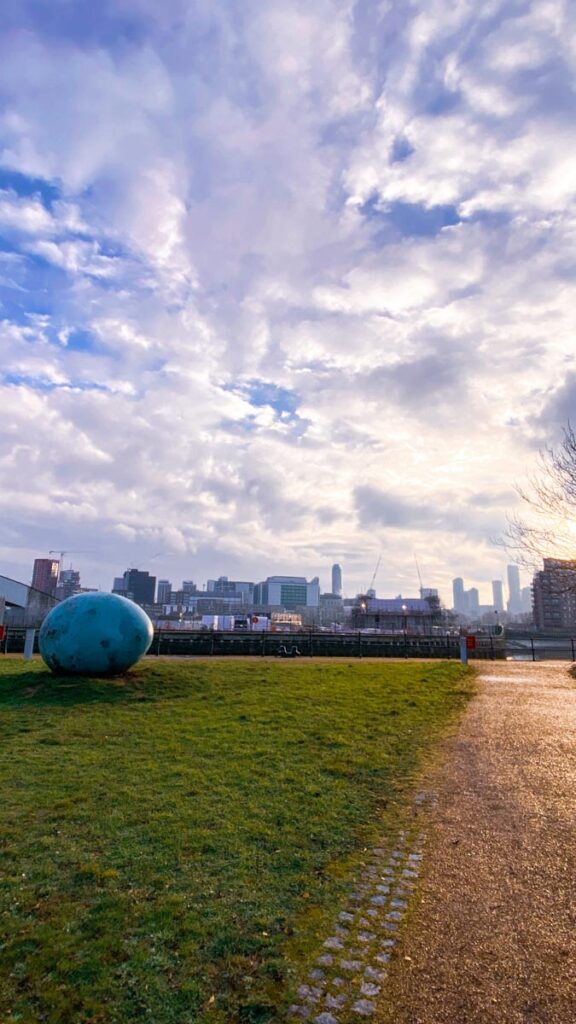
You may think of sculpture as primarily a visual form, but the next work on the walk, Rajkowska’s The Hatchling, may just change your mind.
At first glance, it’s nothing special – a large egg-shaped form, cobalt blue, mottled with a few dark patches here and there. It’s only when you get closer that you hear it… the chirping and creaking sounds emitting from the egg, sometimes faintly, at other times more loudly – simultaneously piquing your curiosity and drawing you in ever closer, inviting the viewer to interact by touching the sculpture.
Rajkowska recorded a hatchling, a baby blackbird emerging from the nest for the piece. In incorporating the first moments of a fragile new life, she intended to draw viewers out of their internal world and to think about something bigger than themselves.
It’s a mighty long walk to Royal Victoria from The Hatchling – it took us about an hour (with admittedly some wrong turns thrown in because it does get a bit confusing).
You have a couple of options here – follow the official route which hops on the DLR at Star Lane to Royal Victoria or walk it using the map at the bottom of this guide.
Either way, you’ll get to pass through the eclectic Cody Dock, an old gasworks turned art hub, gallery space and cafe. It’s a cool little gem that I’d love to go back and explore more and the cafe is a good spot to refuel before you forge ever onwards.
Don’t do as I did and get a bit lost… but then again, it did afford the chance for this shot so all was not lost.
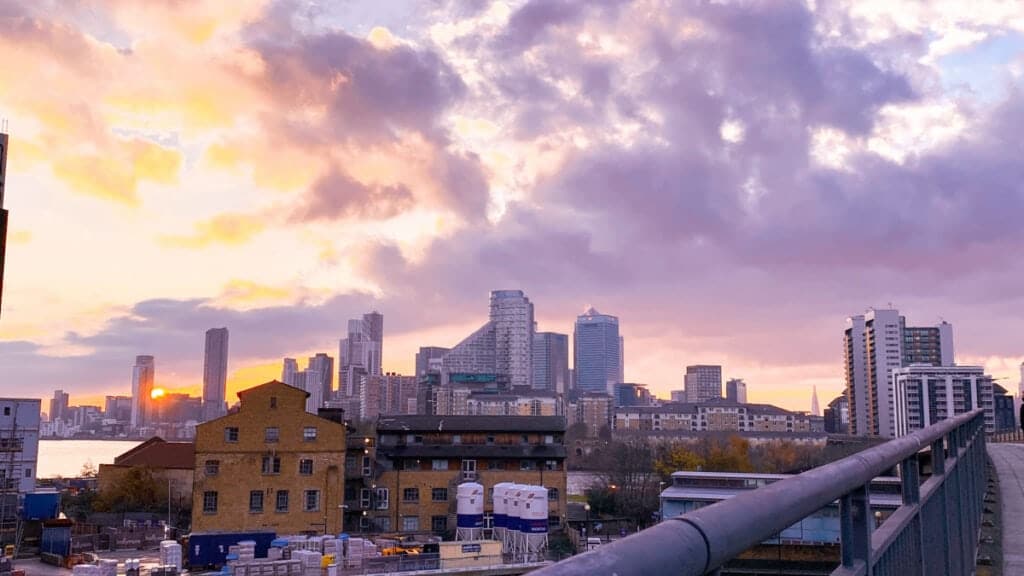
6: Bird Boy (without a tail) – Laura Ford (2011)
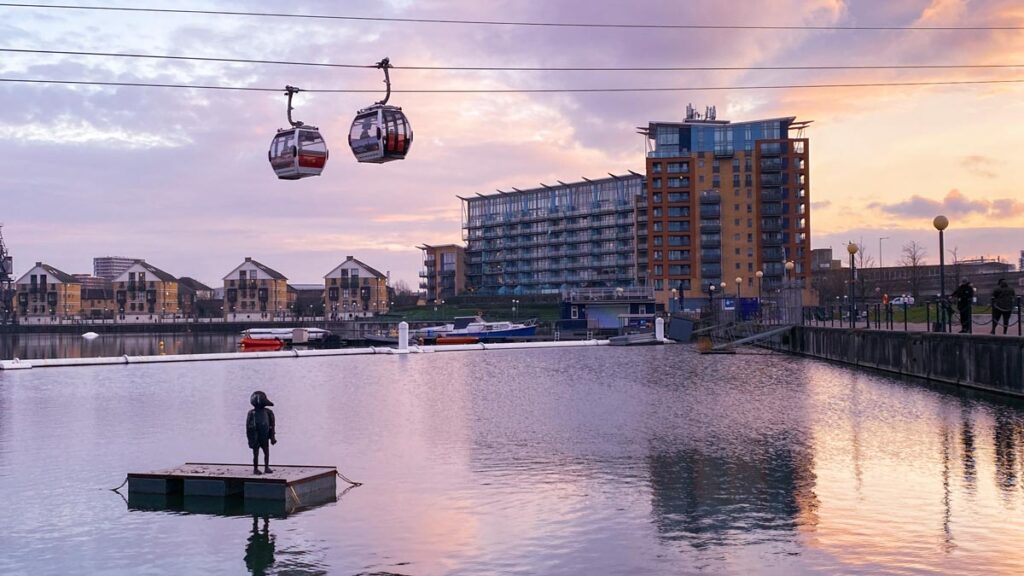
You might miss the small form of Bird Boy at first – positioned on a small pontoon next to the cable car station, it’s the most unobtrusive of the works on the trail.
I have to admit, it was probably the work I found most difficult to engage with, whether that was because of its size, its position at the end of a long stretch of walk or it just wasn’t to my taste, I’ll never be sure.
Still, as with all art, it’s up to you to approach it with an unbiased mind. The figure represents a small child with a bird’s costume, lost amidst the vast vista of the Thames, intentionally contrasting with the imposing and entitled positions normally occupied by sculptures.
Walking time: Pretty much none – you’re about to hop on the Emirates Cable Car to bob your way over the Thames, throwing in a few oohs and ahhs at the unfurling cityscape before it unceremoniously dumps you on the other side of the river. You’ll find the next work inside the cable car.
7: Sanko-time – Larry Achiampong (2020)
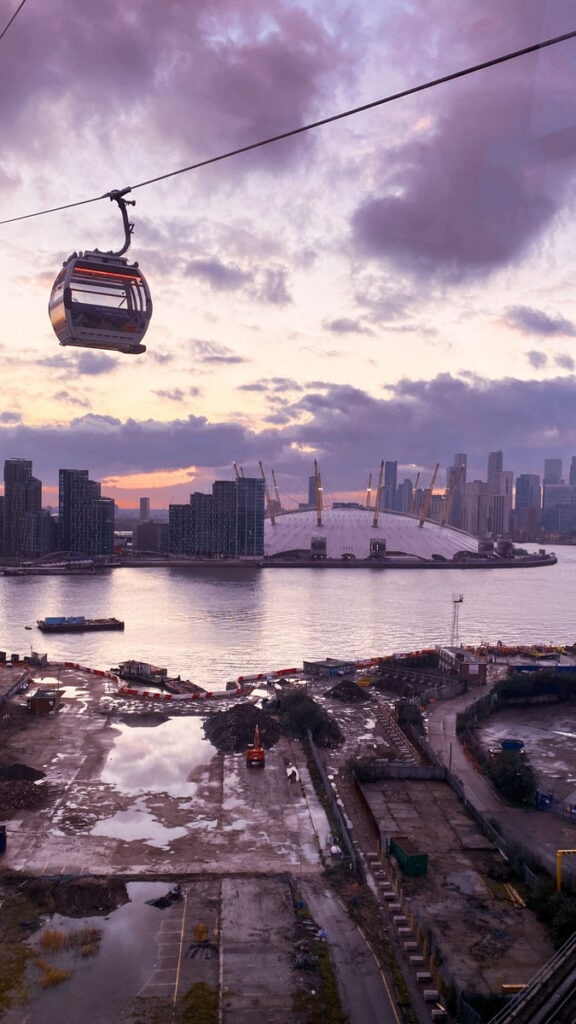
I’ve referred to The Line as a sculpture trail a few times in this guide – and technically that’s not actually true – as demonstrated by the next work on the walk, Larry Achiampong’s Sanko-time.
This audio piece combines evocative sounds and samples with excerpts from the Museum of London’s Oral History Collection: Windrush Conversations, forms a loose narrative about the complicated history of the docks, bound up as it is in the shameful sting of colonialism.
I won’t ruin the work by talking about it too much, but there are two parts – one for each part of a round trip on the line and it certainly puts a different spin on the areas surrounding you as you move over the river.
Walking time: One minute from Emirates Greenwich Peninsula.
8: Quantum Cloud – Antony Gormley (2000)
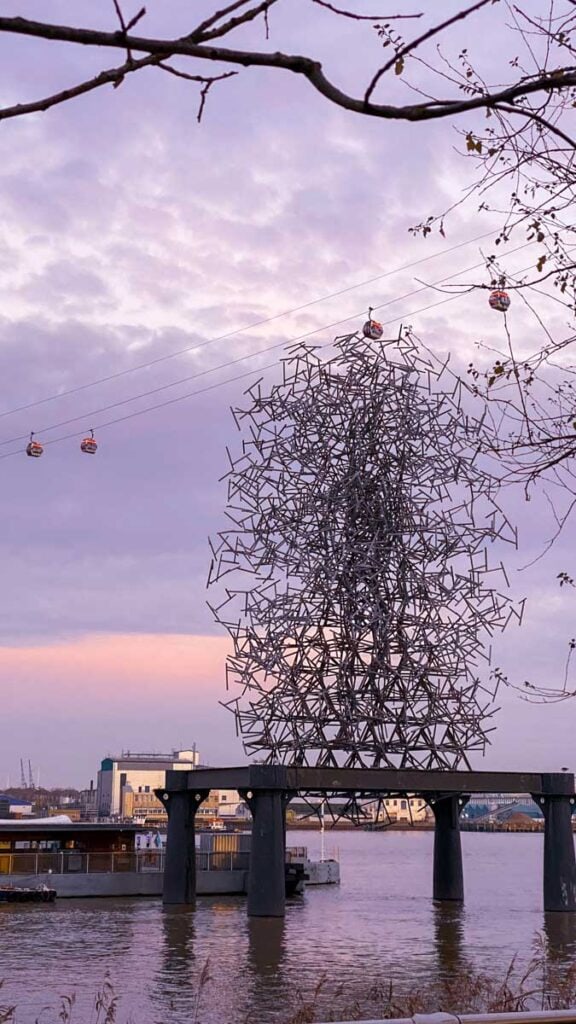
If you’ve visited the Greenwich Peninsula in the past twenty are, chances are you’ve already spotted famed sculptor Antony Gormley’s Quantum Cloud standing in its position a small way into the water.
In creating the work, Gormley wanted to question our position in the universe – drawing out the tension between our concept of having control over our lives and the fact that we form a small part of a much larger whole.
The tetrahedral structure changes depending on the viewer’s position – at times it looks intentional, at others a chaotic mess – a deliberate comment on the nature of life.
Walking time: Two minutes.
9: Liberty Grip – Gary Hume (2008)
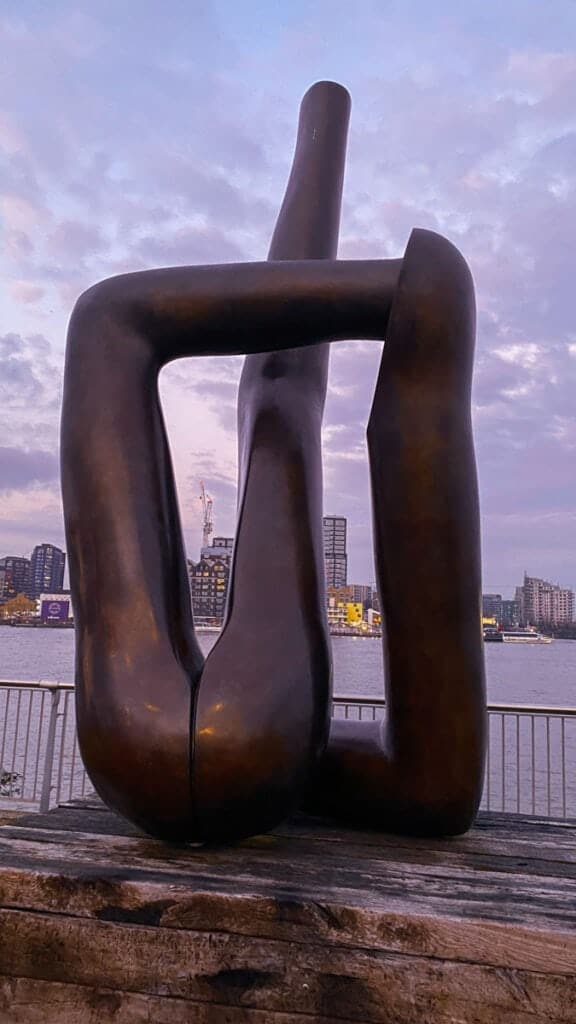
The second in the series of works stationed on the Greenwich Peninsula is no less curious than Gormley’s Quantum Cloud. Gary Hume’s Liberty Grip takes a familiar object, in this case the arm of a mannequin, replicating it and positioning it so as to be near unrecognisable. The name comes from a cheerleading hold – with Hume intending the sculpture as a cultural representation of American power and its alluring grip, which at the time he was creating the work was taking shape in the form of the Gulf War.
Of course, looking at it, there’s no way you’d read that subtext. My own impressions were of an unsettling arrangement of limbs, both formless and just about recognisable, but without any immediately visible context that you can grasp onto.
Walking time: Three minutes.
10: A Slice of Reality – Richard Wilson (2000)
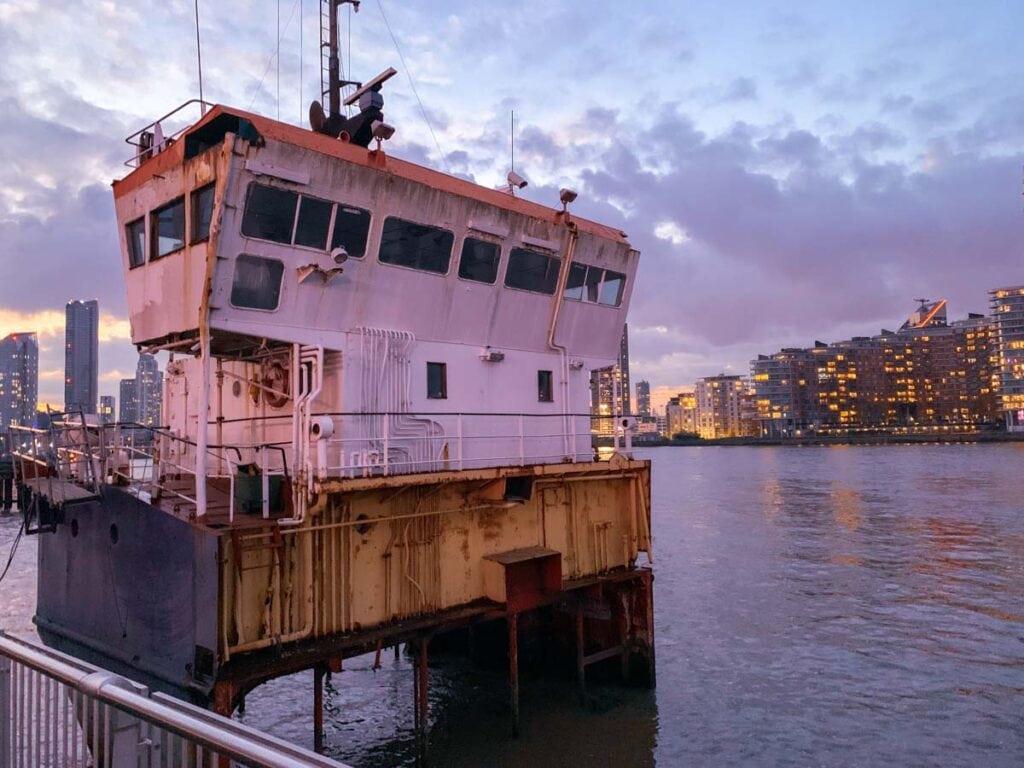
In a stretch of river strewn with rusty boats looking as if they’re on the verge of collapse, at first look, it’s difficult to identify Richard Wilson’s A Slice of Reality as a piece of art. That’s part of the beauty of the piece – a vertical cross-section of an old sand dredger called the Arco Tent.
Where normally you would see the large exterior of the boat and nothing of the interior, A Slice of Reality turns convention on its head – opting to show viewers parts of the engine room and living quarters and very little of the exterior itself. This playful take on a familiar object is meant to represent a “sound bite” communicating Greenwich’s history and the dividing nature of the Meridian Line.
Walking time: Less than a minute.
11: Here – Jon Thomson and Alison Craighead (2012)
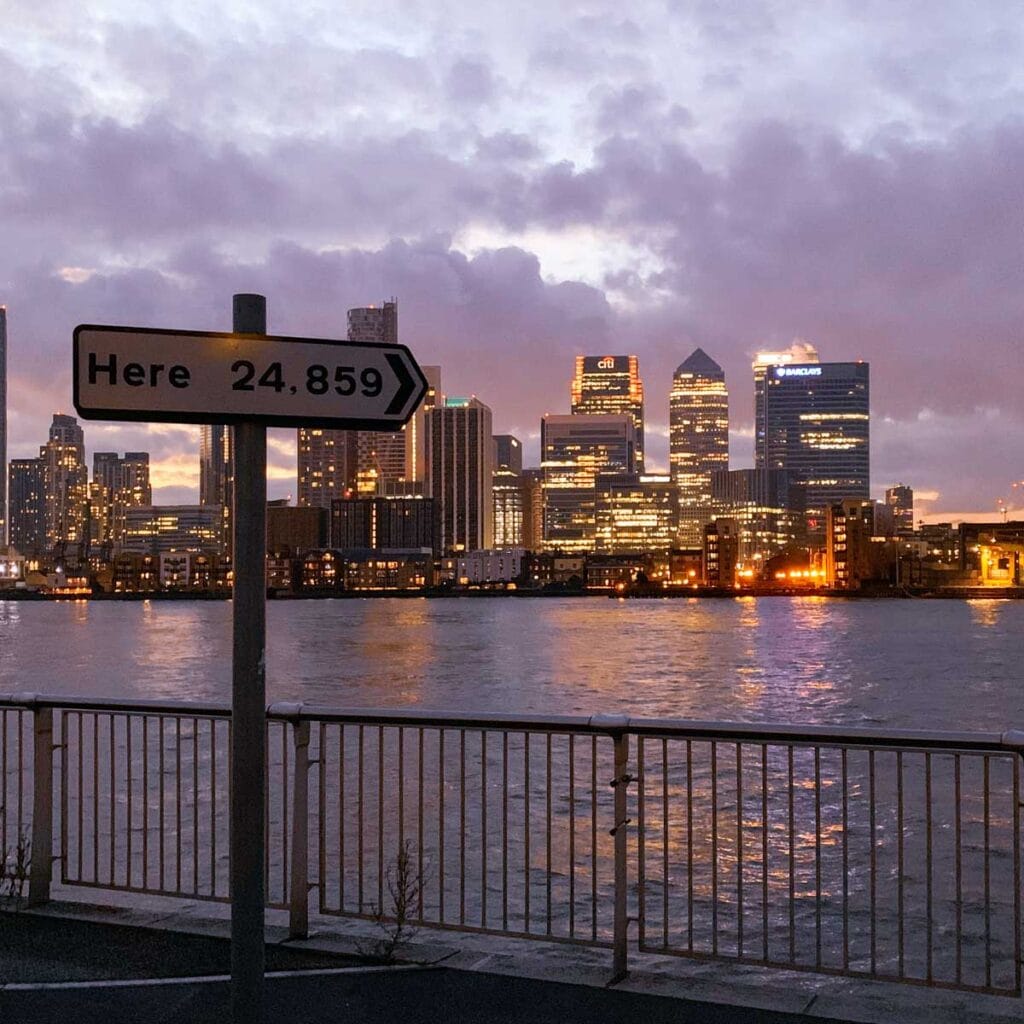
We’re almost, but not quite at the end!
Facing across from the monolithic towers of Canary Wharf on the other side of the river, you’ll find a curious road sign pointing at a diagonal, seemingly pointing to nowhere and simply inscribed with the word Here and the number 24,879.
Like everything else we’ve encountered thus far, Thomson and Craighead’s work isn’t as simple as it looks. The number, rather than being a random one plucked from thin air, actually represents the distance in miles you’d need to travel around the world to find yourself back in the same spot.
Walking time: Two minutes.
12: A Bullet from a Shooting Star – Alex Chinneck (2015)
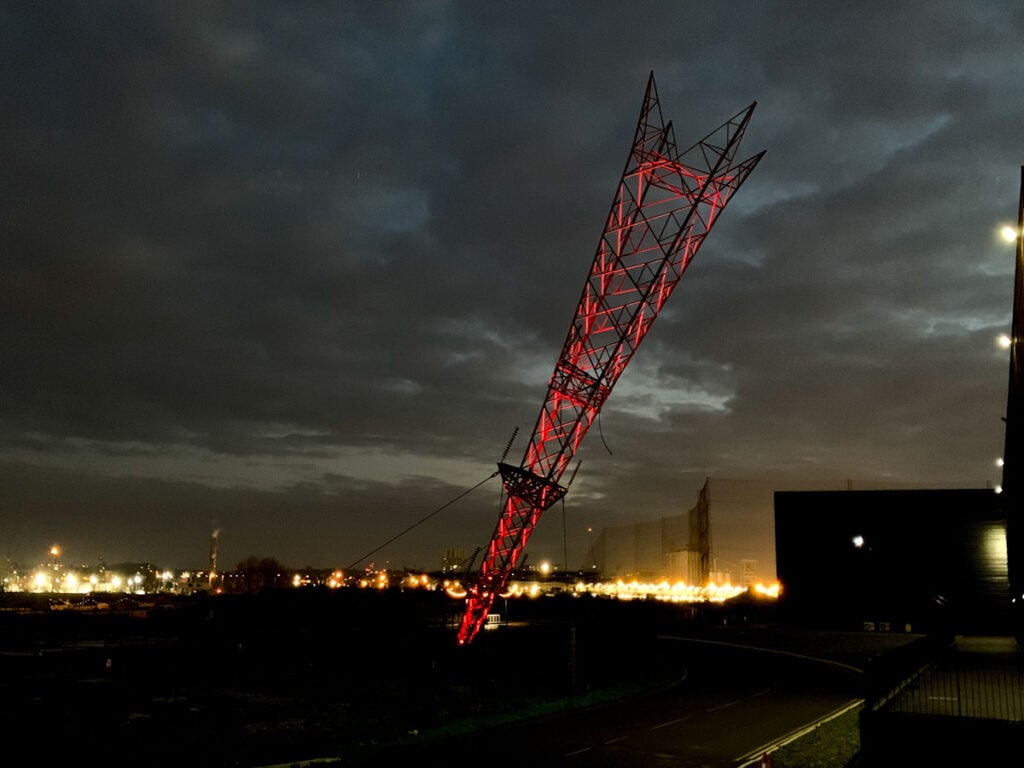
After the veritable glut of pieces on the Greenwich Peninsula, the last piece on the trail – Alex Chinneck’s A Bullet from a Shooting Star, came around rather quickly… unfortunately, access to it was closed so we had to make do with peeking at it from afar.
The inverted pylon pokes out of the ground – looking as if it’s just fallen from the sky in a visual theatre that at once reconstructs the history of the area, yet presents it in a surreal form.
So it ended, and with that, I’d completed The Line, London’s ever-evolving art walk.
Dusk had turned to night at the end of a true adventure through the city. I’d ventured through many parts of London I’d never seen other than from the window of a whizzing train, seen a variety of works old and new along the way.
Considering doing the walk yourself? Here are a few practical tips and a map to help guide your path.
Practical Information and Map for The Line Art Walk
- I’ve created a super-practical Google map below that you can save to your phone and navigate between the pieces. Use this or the official map to guide your steps – if in doubt, check, check and check it again as it can be confusing.
- The nearest stations to the beginning (ArcelorMittal Orbit) is Pudding Mill Lane (DLR) or Stratford (Tube, DLR, train). The nearest station at the end is North Greenwich (tube) although you can also hop on the Emirates cable car at Greenwich Peninsula back to Royal Victoria Dock and take the DLR from there.
- It’s about a 40 minute walk from the peninsula at the end of the trail into Greenwich proper using the Thames Path if you’d rather do that instead. Beware, there’s very little lighting along the way after dark.
- Website: www.the-line.org
- I’d highly recommend downloading the Bloomberg Connects app from Google Play Store or Apple app store before you go – there’s a whole guide for The Line with interesting commentary from the artists about their works and about the walk in general.
Looking for More London Art & Culture Guides?
Check these out…
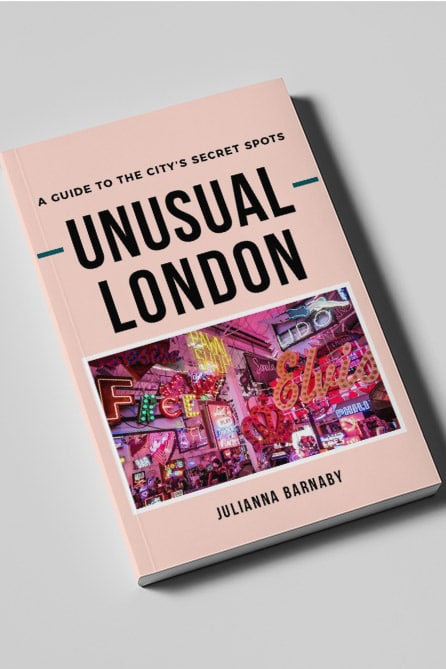
Discover with the Unusual London Book
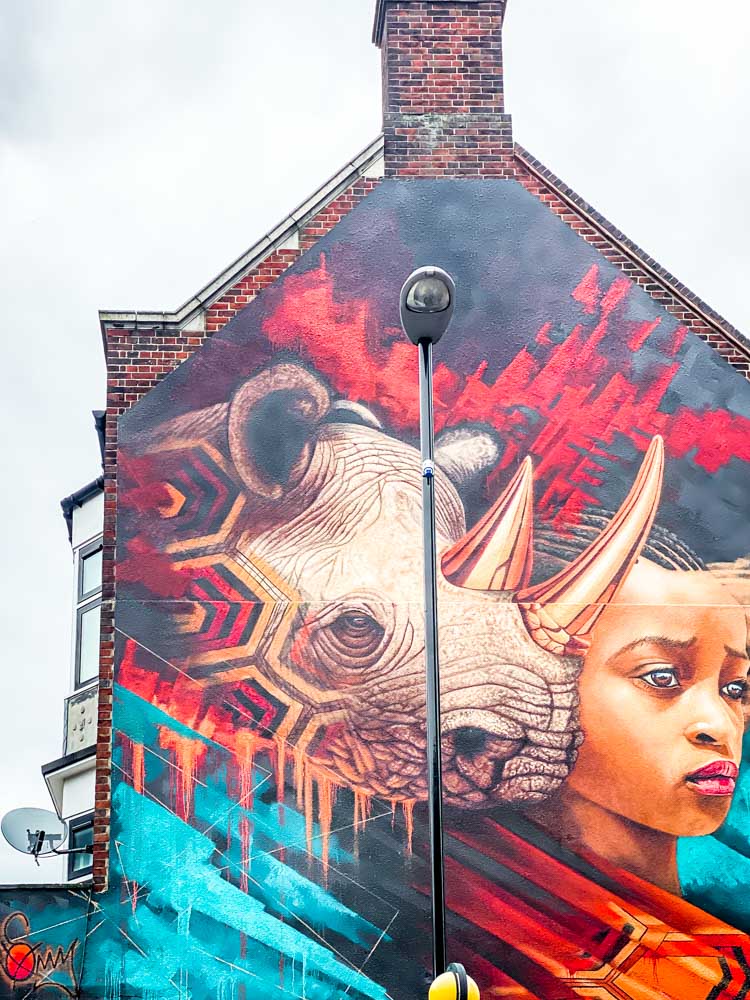
Street Art in London: A Guide
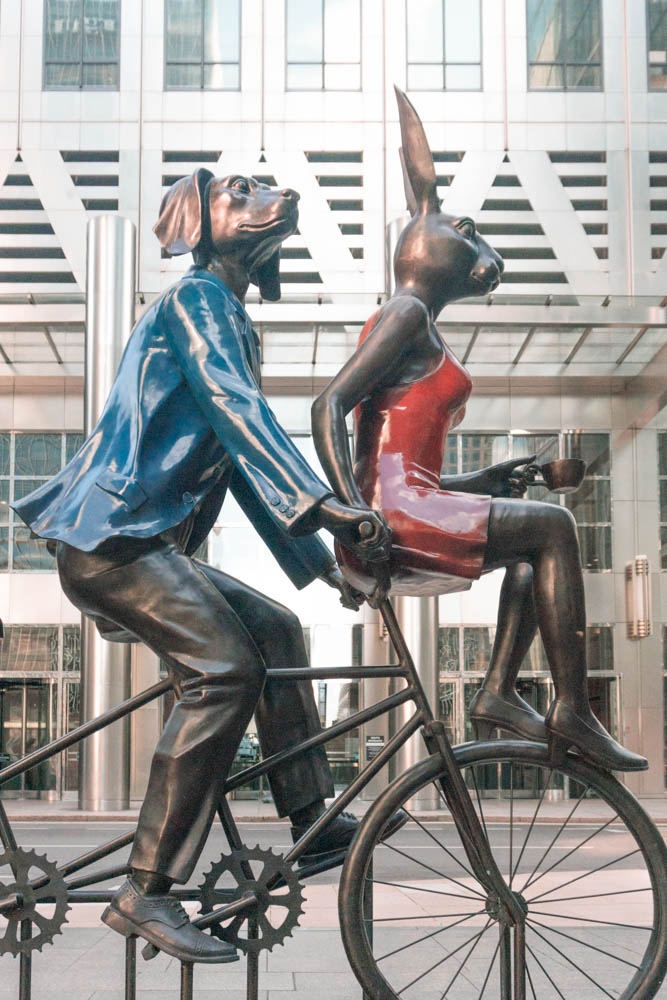
The New Mysterious Sculpture in Canary Wharf

